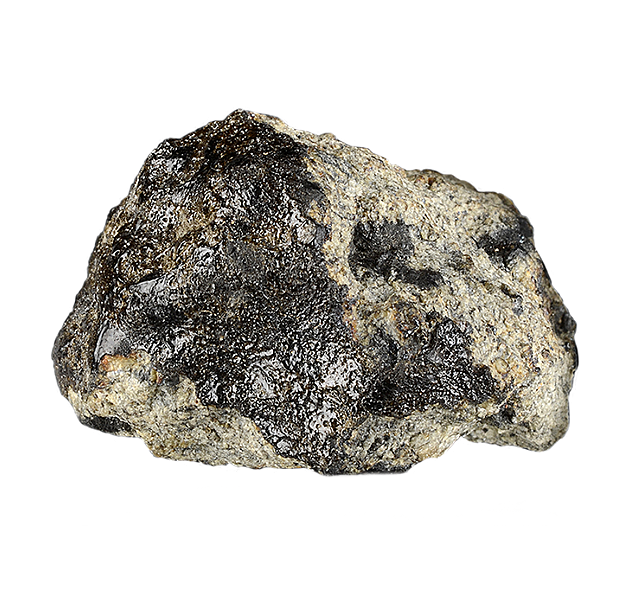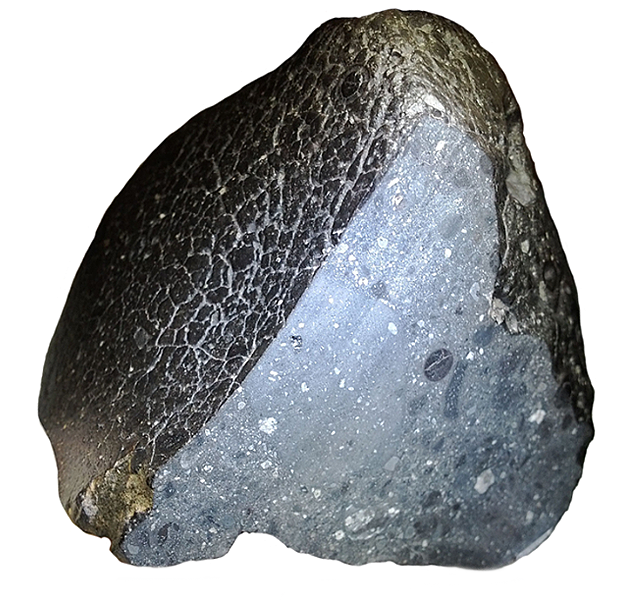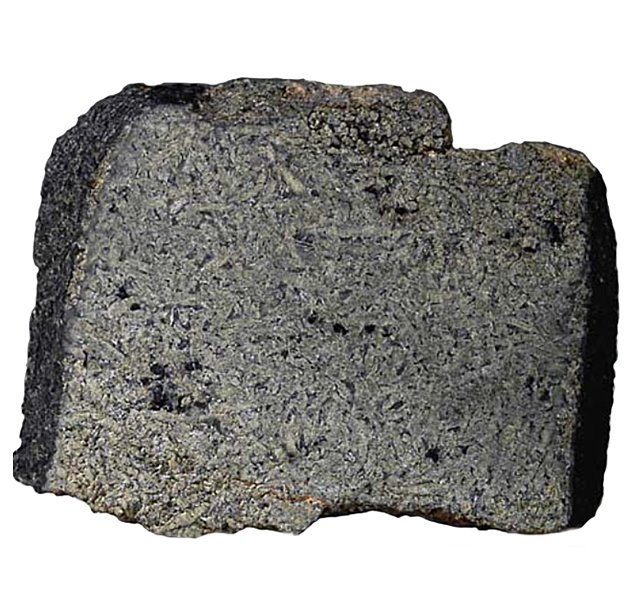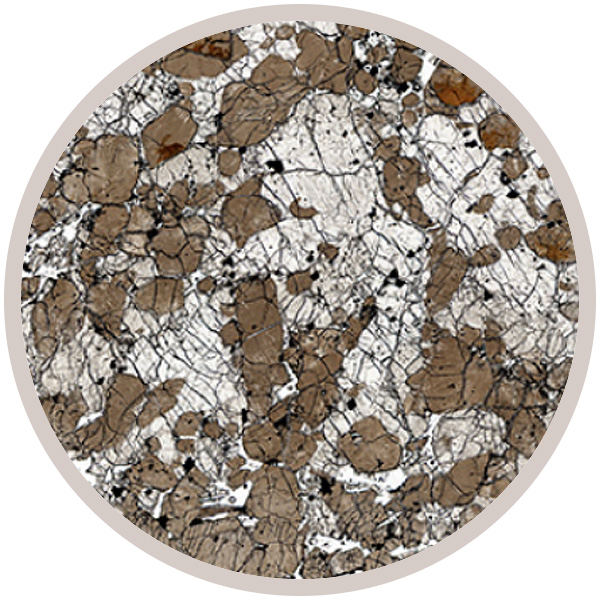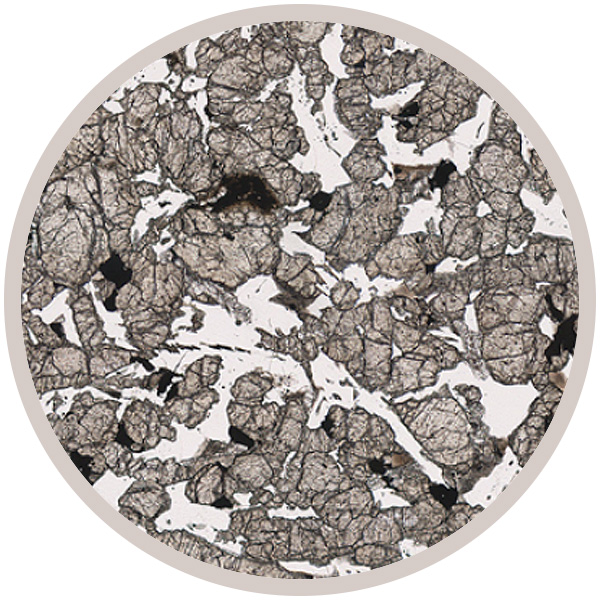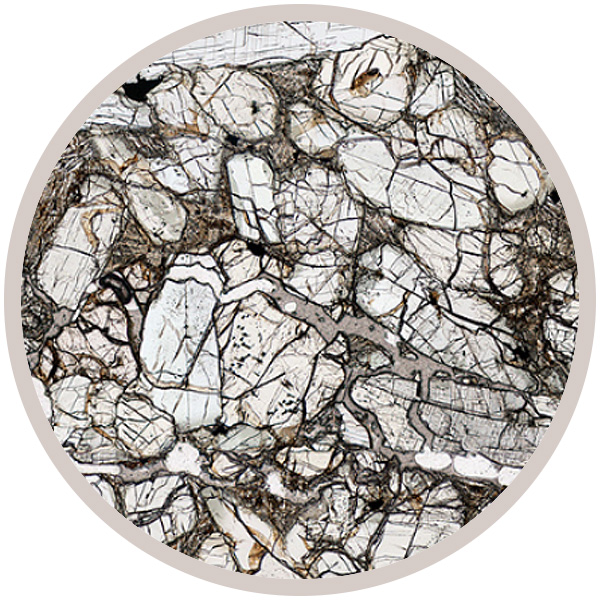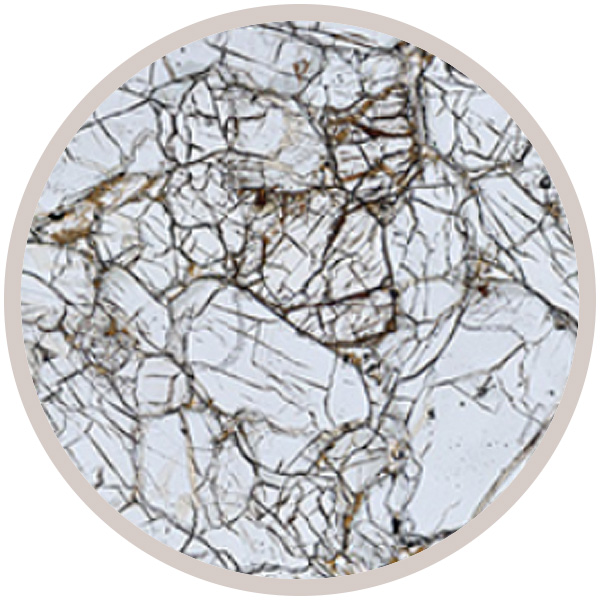
Fact sheet
The Lafayette meteorite has an unknown provenance. It was “rediscovered” in 1931 in Purdue University, Lafayette, Indiana, USA. Lafayette is a single oriented 800 gram stone with a fusion crust showing well-developed flow features. Isotopic techniques have produced ages of 1.33 Ga (Ar-Ar) and 1.32 Ga (Sm-Nd). Lafayette landed on Earth 3,000-4,000 years ago.
The mineral assemblage is dominated by clinopyroxene (augite) with olivine, orthopyroxene and plagioclase feldspar occurring in lower abundances. Minor species include K-feldspar, chlorapatite, titaniferous magnetite and the sulphides chalcopyrite and marcasite.
Compositionally, Lafayette is similar to the Nakhla and Governador Valadares meteorites, but contains more extra-terrestrial water and alteration material than either of them. This alteration assemblage consists of smectite, serpentine, gypsum and a siderite-phyllosilicate-Fe oxide-hydrated silicate gel.
This collection of meteorites includes Shergottites, Nakhlites and Chassignites (or SNC meteorites) which originate from the surface of the planet Mars.
They carry unique signals of the surface of the planet that allows scientists to study the composition and age of Martian rocks. The collection includes a sample of the famous ALH84001 meteorite, evidence from which was used in 1996 to begin the debate of 'life on Mars?'.

